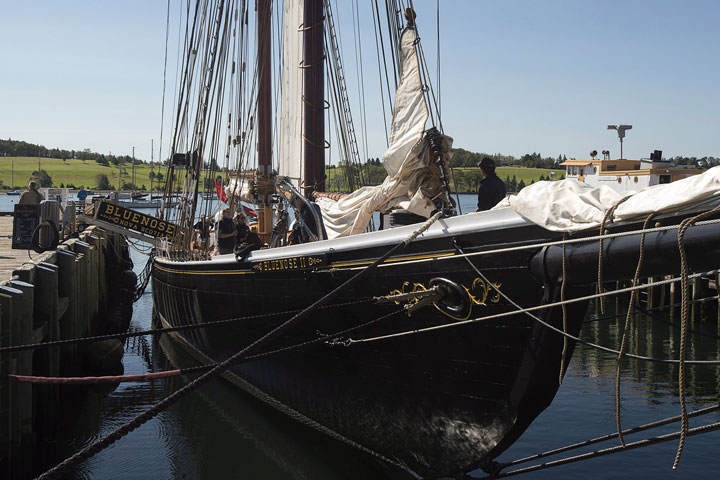HALIFAX – The classification society chosen to evaluate the Bluenose II might not have been the first choice of the schooner’s designer, according to documents released Tuesday.

The documents (presented at the bottom of this story), obtained by Global News through a Freedom of Information request, detail the process of selecting a regulator to ensure the ship was built to specific standards.
In February 2010, the Bluenose II’s designer, Lengkeek Vessel Engineering (LVE), prepared a report for government officials about which regulators — or classification societies — were available to do the job.
READ MORE: Bluenose II coverage from Global News
Ship owners often seek classification from international regulatory agencies because it usually guarantees a well-built vessel.
In the case of the Bluenose II, designers seem to have preferred the classification society Lloyd’s Register (LR) over the American Bureau of Shipping (ABS), although the firm’s final written preference was redacted from the documents obtained by Global News.
READ MORE: Bluenose II regulator questions ship’s stability report
- Tories grill Liberals in question period about minister’s ties to lobbyist, PPE company
- Planned anti-carbon price protests prompt security warning to MPs
- Poilievre blames B.C. decriminalization, drug policy for record deaths
- A Quebec mayor opens up about the ‘shocking’ threats politicians are facing
The memo states that the ABS has a larger share of the overall boat market in North America, “however, the majority of the vessels have their load-line assigned by ABS, but the vessels are not fully classified by ABS.”
The document also outlines the rule books — the in-house naval building codes — used by each society.
Lloyd’s would use two books: one for wooden ships and a second for building yachts.
READ MORE: Bluenose II inspection reveals dozens of deficiencies
The ABS would also use two books: one for wooden ships and one for offshore racing yachts.
In the years since ABS was chosen for the job, a third rule book, titled Rules for Building and Classing Steel Vessels, was added. ABS officials have told Global News that individual regulations for the Bluenose II’s construction have been taken from each of the three books, which is the main reason why the wooden schooner has a steel rudder.
READ MORE: 4 things you didn’t know are sending the Bluenose II project awry
The ABS was ultimately hired to do the job. Cost estimates for each organization were redacted from the documents.
The explanation, found in a second memo dated May 7, 2010, states the ABS “has lowered their price and LR has been very slow to respond to our request for a formal proposal and it is expected that since the sinking of the sailing vessel ‘Concordia’ LR is not as keen anymore in the project.”
In February 2010, the 57-metre Concordia sank off the coast of Brazil. The ship was operated by West Island College, and all staff and students on board were safely rescued. The ship’s captain blamed the capsizing on a downward wind called a “microburst.” The ship was built and classed to Lloyd’s Register standards, although it was not found responsible in any way for the wreck.
READ MORE: Bluenose file was given to wrong department: Darrow
Global News requested more information from the project’s current manager, deputy minister David Darrow, but he was not available for comment at the time of publication.
The Bluenose II is at least $4.9 million over-budget and more than three years late. Officials say the vessel might be able to sail by next spring.
Read the documents detailing the classification society options for the Bluenose II:




Comments